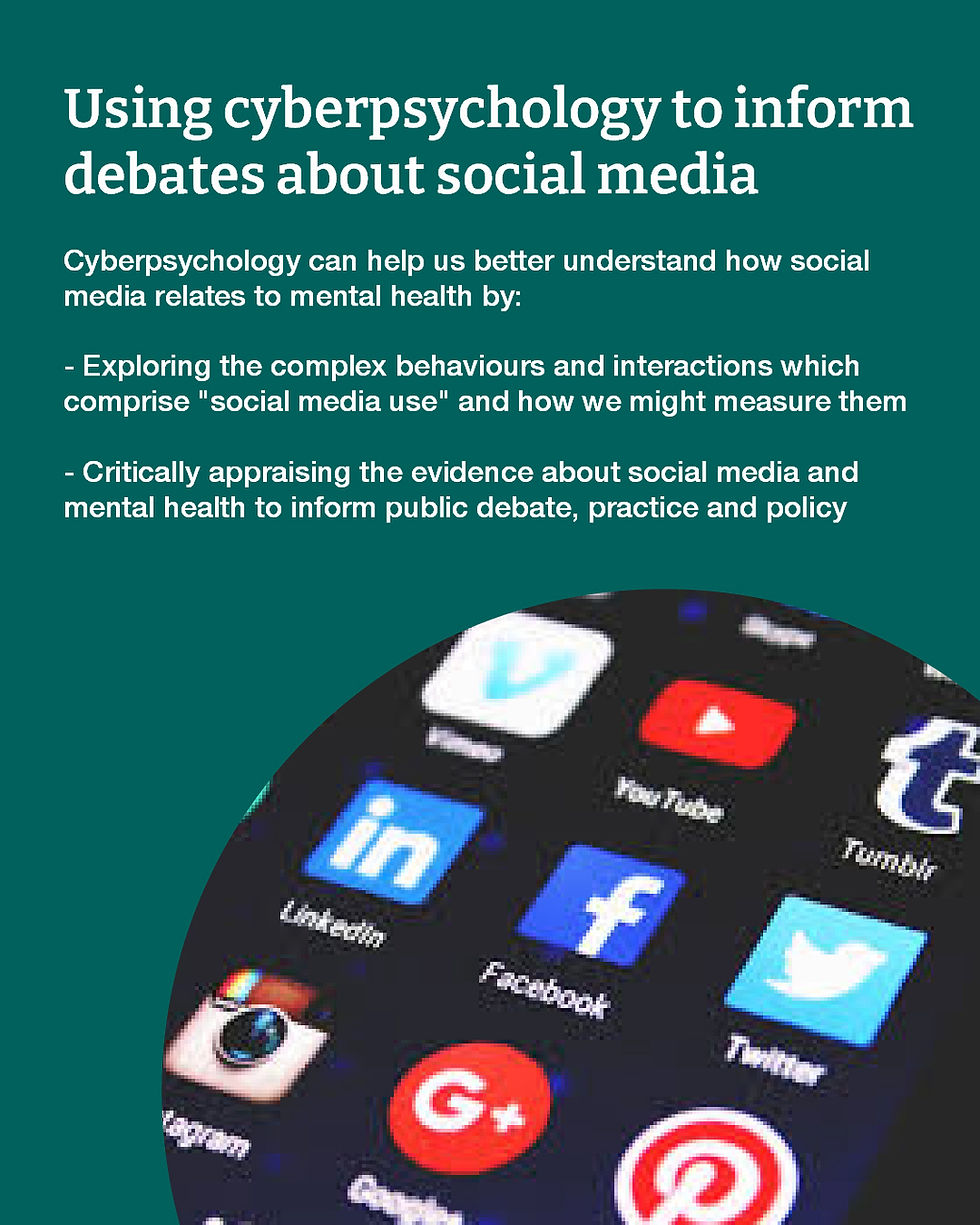Benefits of Open Research
- LindaKKaye

- Oct 15, 2019
- 3 min read
I was invited to deliver a staff development session recently to align with Open Access Week (14th-18th October 2019). Within this session, I had a pleasure of co-delivering a session with some of my fabulous colleagues, in which my session was on the “Benefits of Open Research”.
Here I discussed four benefits:
· Enriching your Research
· Being Accessible
· Being Impactful
· Being Open and Transparent
Before outlining these benefits, I started by contextualising these using examples from my own experience. Here I drew on the work on the psychology of emoji which had attracted significant media attention and public debate. Within this, I discussed how the various public platforms my research was represented on allowed it to be open to discussion, prompt additional media publicity, public engagement, all of which had allowed me the opportunity to enrich my research enquiry, be accessible to multiple audiences, and potentially be impactful.
Enriching your Research
I have blogged previously about how public and media engagement can enrich the research process in my blog post “Reflecting on public engagement in research”. In summary, the fact that my research findings were available in The Conversation as a news piece, resulted in media attention, which in turn, led to many discussions with journalists about the work. The questions raised within these discussions were very illuminating about public discourse on emoji, and so this directly impacted upon the research questions I am now conducting research on. As such, media and public engagement through my research being open in this way has served to enrich the research process, and meant that the general public as a beneficiary of my research are integrated in the dialogue and development of the research, not just as an “end-user”.
Being Accessible
I have previously blogged about the importance of “Finding creative ways to disseminate research” in which highlight how this can resolve three issues which threaten accessibility:
· Financial barriers of academic journal paywalls
· Language barriers of academic jargon and style
· Time barriers in which beneficiaries may not have sufficient time or resource to read heavy academic sources
Therefore, I discuss that finding creative ways to showcase research findings, particularly through public channels may resolve all of these accessibility issues. I give examples of how using animation software to build visual summaries of research can be uploaded onto YouTube or shared via professional Twitter, and therefore can support these activities. The benefits of this in many ways can relate to the next issue regarding “Being Impactful”.
Being Impactful
Having research insights which are open and public can be a platform for supporting and evidencing research “impact” as per REF 2021. This should be considered with respect of who the primary beneficiaries of one’s research are, but in many cases this may be the general public, in an attempt to inform public debate or understanding. Therefore, having online metrics such as YouTube views, social media shares, likes and comments, Twitter conversations etc are all metrics by which one may be able to evidence reach of impact. Additionally, the benefit is twofold in that not only does this provide some evidence of impact, but is a straightforward way to be directly interacting with the primary beneficiary/s of one’s research.
Being Open and Transparent
Finally, I discussed the issue of academic practice and how open research is becoming increasingly encouraged, certainly within psychological science. Here I outlined the Open Science Framework and how this supports open and transparent research practices. This is a repository and database for documenting all aspects of research including; full text pre-prints, data sets, supplementary research materials, pre-registration of research, and registering reports. I discussed how these open practices could support transparency in the research process and ensure researchers are upholding integrity in research.
Final thoughts
These are just some examples of the benefits of open research. Many of these are based on my own experiences and so other people may have varied experiences which illuminate the benefits (or indeed drawbacks) differently. However, I can reflect that the open nature of my research and ways of working continue to enrich my experiences as a researcher and academic, and I like to find ways to support others in using these appropriately for their practice too.



Comments